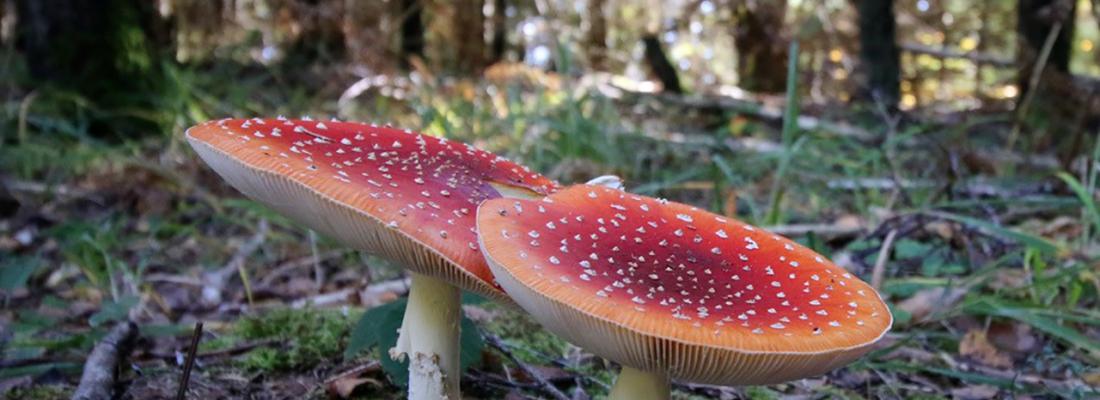Biodiversity Reading time 2 min
Large-scale genomics sheds light on the evolutionary history of mutualistic forest-dwelling fungi
Published on 12 October 2020

Fungi display a variety of modes of nutrition (i.e. lifestyles): some are pathogens that parasitize living organisms, some are saprotrophs that exploit decomposing organic matter, and yet others are mycorrhizae that form beneficial symbioses with plants. More specifically, the plant roots and fungi engage in a mutualistic relationship that benefits them both. The mycorrhizae help the plants absorb essential minerals, such as nitrogen and phosphorus, promoting growth. The plants provide the mycorrhizal fungi with sugars and favourable environmental conditions. This mutualism has allowed plants to colonise most terrestrial habitats. To understand the evolutionary emergence of symbiotic traits in forest-dwelling fungi, the research consortium compared the functional traits encoded by the genomes of 135 fungal species, including 62 species of mycorrhizal fungi. Notably, the researchers sequenced and analysed, for the first time, the genomes of 29 symbiotic fungal species belonging to taxonomic orders like Russulales and Cantharellales; these taxa are important keystone species in temperate forest ecosystems.
The study revealed that, over evolutionary time, forest fungi transitioned multiple times from sapotrophic to symbiotic lifestyles. These transitions were accompanied by a loss of the genes that encode plant-cell-wall-degrading enzymes (such as cellulases and lignin-modifying enzymes). Other genes (e.g., sugar and amino acid transporters) are conserved in saprotrophic ancestors, but have been recruited for new symbiotic functions. Finally, several symbiosis-specific genes involved in fungus-plant communication were created de novo.
These transitional patterns were observed in all the families of ectomycorrhizal fungi1 belonging to the phyla Basidiomycota and Ascomycota2 (which represent 20,000 species). This finding provides a striking example of recurrent convergent evolution3 taking place over a time span of more than 100 million years. The researchers also discovered a few "hybrid” fungi—species that are still capable of decomposing organic matter but that can also live in symbiosis within the roots of their host plants. In these species, the genes encoding plant cell-wall-degrading enzymes are still present. However, they are not expressed when the fungi live as symbionts. It is possible that these species illustrate the first steps towards strict symbiosis.
This study has considerably increased the genomic resources available for studying the mechanisms underlying the development and function of mycorrhizal symbioses. In addition to clarifying the evolutionary history of forest-dwelling fungi, these discoveries will facilitate future studies examining how fungal communities in forest ecosystems could deal with climate change.
1.Ectomycorrhizal fungi colonise the roots of plants. They live in symbiosis with their hosts, helping the latter absorb minerals.
2.Basidiomycota and Ascomycota are two fungus phyla. Species in Basidiomycota form spores on the outside of specialised cells called basidia; mushroom-forming fungi are the most emblematic members of this taxon. Species in Ascomycota form spores within specialised cells called asci; commonly recognised members of this taxon are the morels, truffles, and yeasts.
3.Convergent evolution is a process whereby different species that experience the same environmental constraints evolve similar adaptive responses. In this case, ectomycorrhizal symbiosis is that convergent response.
|
Reference Miyauchi, S., Kiss, E., Kuo, A. et al. Large-scale genome sequencing of mycorrhizal fungi provides insights into the early evolution of symbiotic traits. Nat Commun 11, 5125 (2020). https://doi.org/10.1038/s41467-020-18795- |
